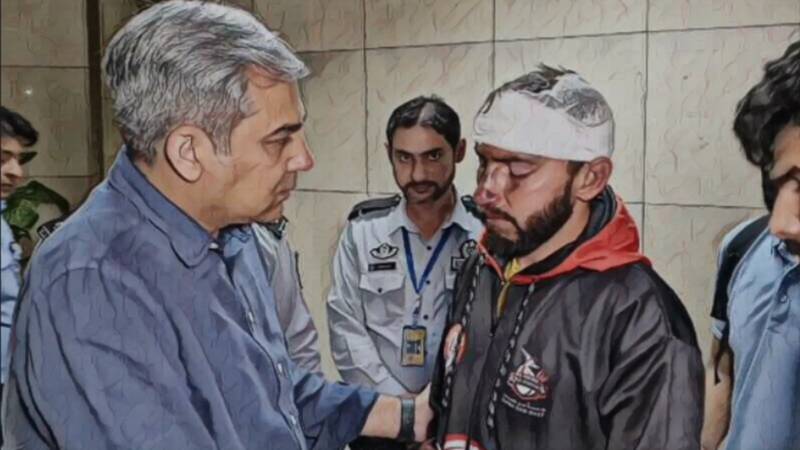
Kyrgyzstan is one of the Central Asian republics that emerged on the map of the world after the disintegration of the USSR. It is a landlocked country and a middle-income nation with the most liberal and open political system in Central Asia. It has an area of 2,724,900 square kilometres and a population of 20,075,271 people. Sunni Muslims make up the largest community at about 90% of the population, followed by Christians. During the last few years, this country has become a favourite of Pakistani students for their higher education particularly medical degrees. One of the causes of this rush to Kyrgyzstan by Pakistani students is the low cost of education. A medical degree in a private college in Pakistan today costs nearly eight to nine million rupees or USD 28,000 to 32,000, whereas the cost of this degree in Kyrgyzstan is around four to five million rupees or USD 14,000 to 18,000.
Unfortunately the world of today in spite of greater literacy and democratic values is rife with religious fanaticism, xenophobia and a wave of rising nationalism. And it was due to this fanatic nationalism bordering on xenophobia that our Pakistani students in Kyrgyzstan found themselves on the receiving end of a violent storm of hatred and prejudice launched by the locals of Bishkek.
In Kyrgyzstan, the fear of foreign domination is present, and foreigners are perceived as agents of some mysterious forces bent upon seizing economic assets of the country
This mob violence was launched against foreign students and the main targets were Egyptians and Pakistanis. The violence was triggered by a video on social media showing a fight between the local and foreign students. This video went viral on social media and innocent Pakistani students who had nothing to do with it became the victims of racial and xenophobic sentiments and hate. This video spread like wildfire in the local community, leading attacks that resulted in injuries and trauma for many Pakistanis – but fortunately nobody was killed or seriously injured. Only three students were hospitalised for treatment.
Such a show of nationalistic fervour and xenophobia results from demonising other nationalities, and making fun of other cultures with different identities and backgrounds. In Kyrgyzstan, the fear of foreign economic domination is present because of the influence of Russia and China, and as such, all foreigners are perceived as agents of some mysterious forces bent upon seizing economic assets of the country. Unfortunately this disturbing new trend of violence is not limited to the Central Asian republics but is a worldwide phenomenon.
India has been the scene of violent attacks on students from Nigeria. Many African students were attacked and beaten up by a violent mob of Indian students in Delhi after the false news of the murder of a local student. In 2024, Muslim students were assaulted for offering prayers in their hostel.
Europe, too, has had its share of xenophobic mob violence. Indian students in Germany faced mob violence based on xenophobic sentiments.
South Africa in spite of its own long history of struggle against Apartheid is not immune from the curse of nationalism and xenophobia. Nigerian and Zimbabwean students have been harassed and beaten up for belonging to a different ethnic and cultural group.
The modern invention of the internet and the resultant social media has innumerable benefits for human society, but unfortunately the it has also played a key role in spreading misinformation and creating tensions and hatred between different groups, leading to mob violence. We have witnessed this many times in Pakistan, when people have been brutally killed or burnt alive by a violent mob of religiously charged zealots. The rapid dissemination of false information can ignite existing prejudices and lead to mob actions before authorities can intervene.
With the increase of international students all over the world, it is now required that proper protection should be accorded to students from different countries. Laws must be enacted against xenophobic violence and for prevention of mob justice. Cultural sensitivity and knowledge of combating misinformation must be taught to the local students. All foreign students should have access to free legal aid and support groups to nip the evil of xenophobia in the bud.
There are around 110,000 Pakistani students in Kyrgyzstan, most of them enrolled in medical degree classes. By now, about 5,000 of them have managed to reach Pakistan in fear of the recent violent incidents.
Aryani, who is in his final year of college, says that while Bishkek appears to be returning to a state of normalcy, he was not willing to stick around in the Kyrgyz capital at the moment. He says he planned to get a ticket and fly back to Pakistan as soon as he could. Korish, a third-year student, says that he managed to step out of his hostel on Monday morning and could move around the city. But he also said he would travel back to Pakistan to allay his parents’ concerns.
In a news conference on Sunday, Pakistan’s Foreign Minister Ishaq Dar said Kyrgyz authorities had assured that the situation had been brought under control. He confirmed that “four or five” Pakistani students were injured in the violence but refuted online rumours of any deaths in the clashes.
Yet, Dar appeared to acknowledge the fears of the more than 11,000 Pakistani students in Kyrgyzstan, and their families, announcing that the government was arranging flights to bring back all students who wanted to return. The government, he said, would bear the expenses — though Pakistani students in Bishkek claimed they had to pay out of their pockets for the tickets.

